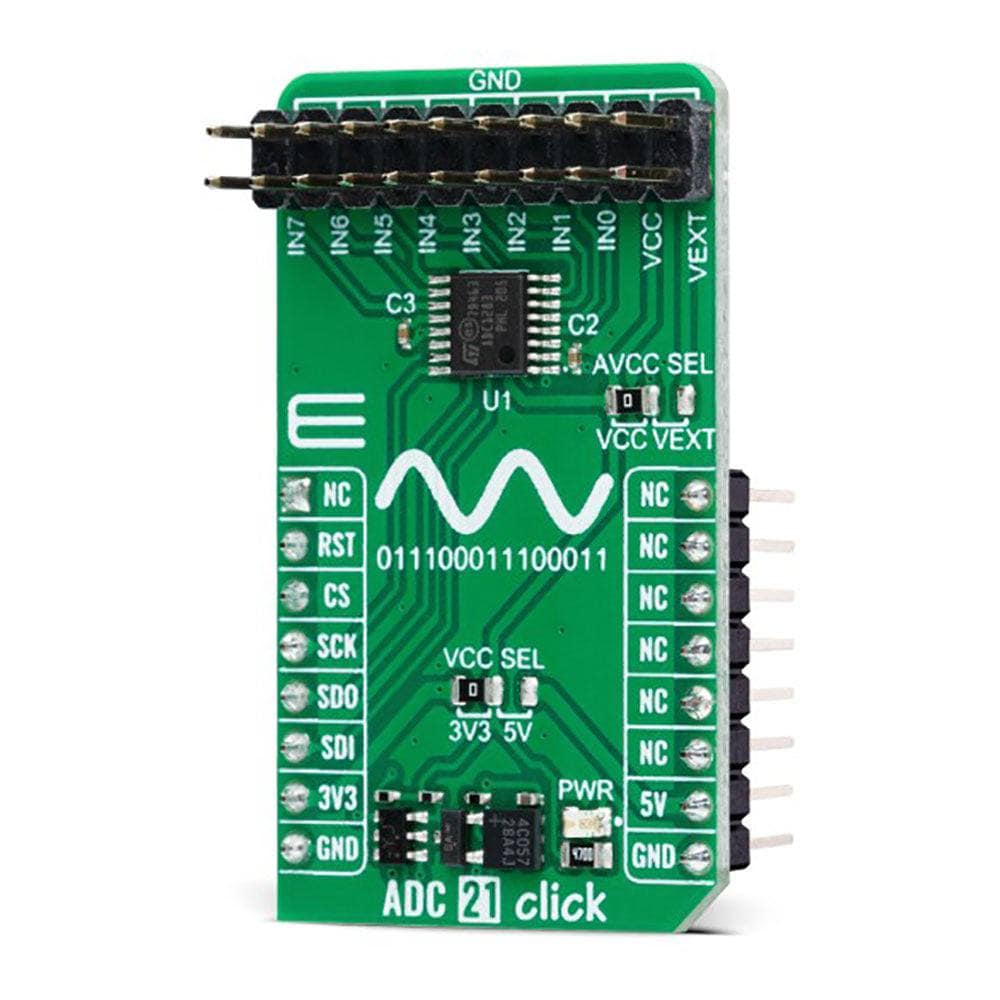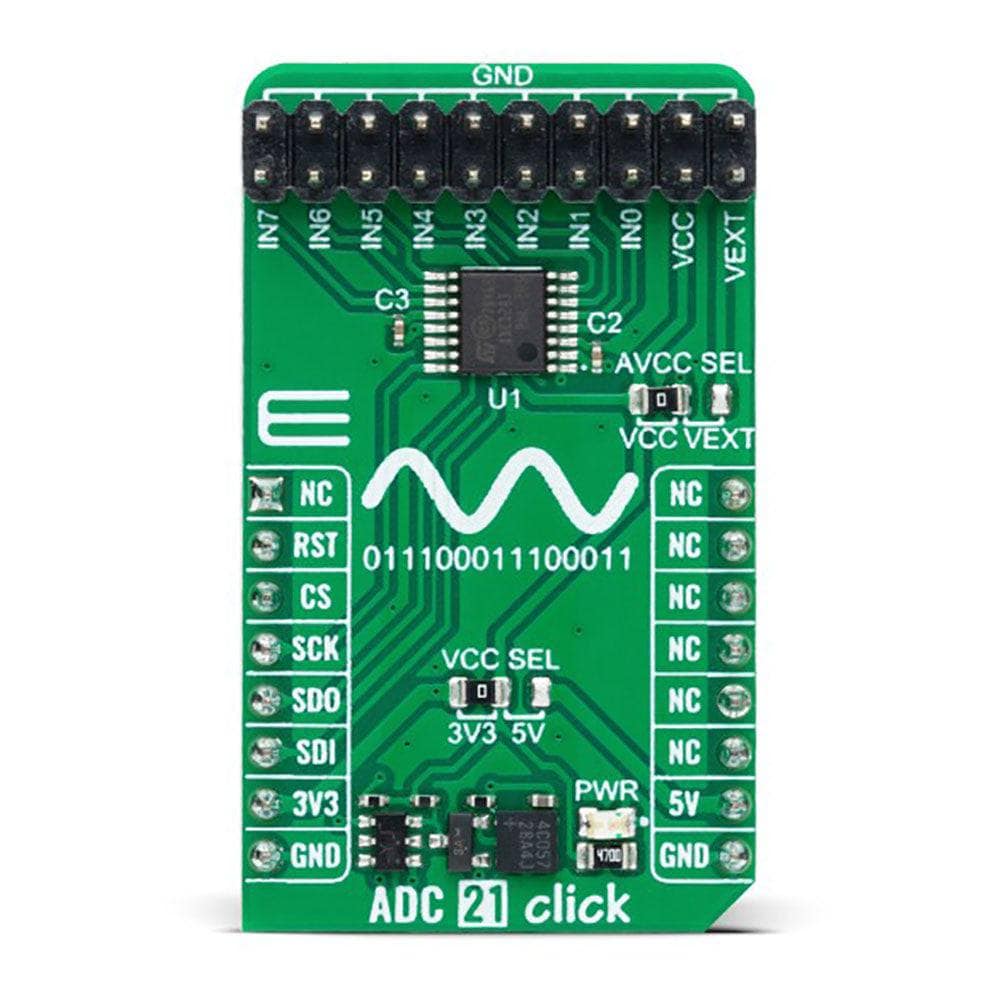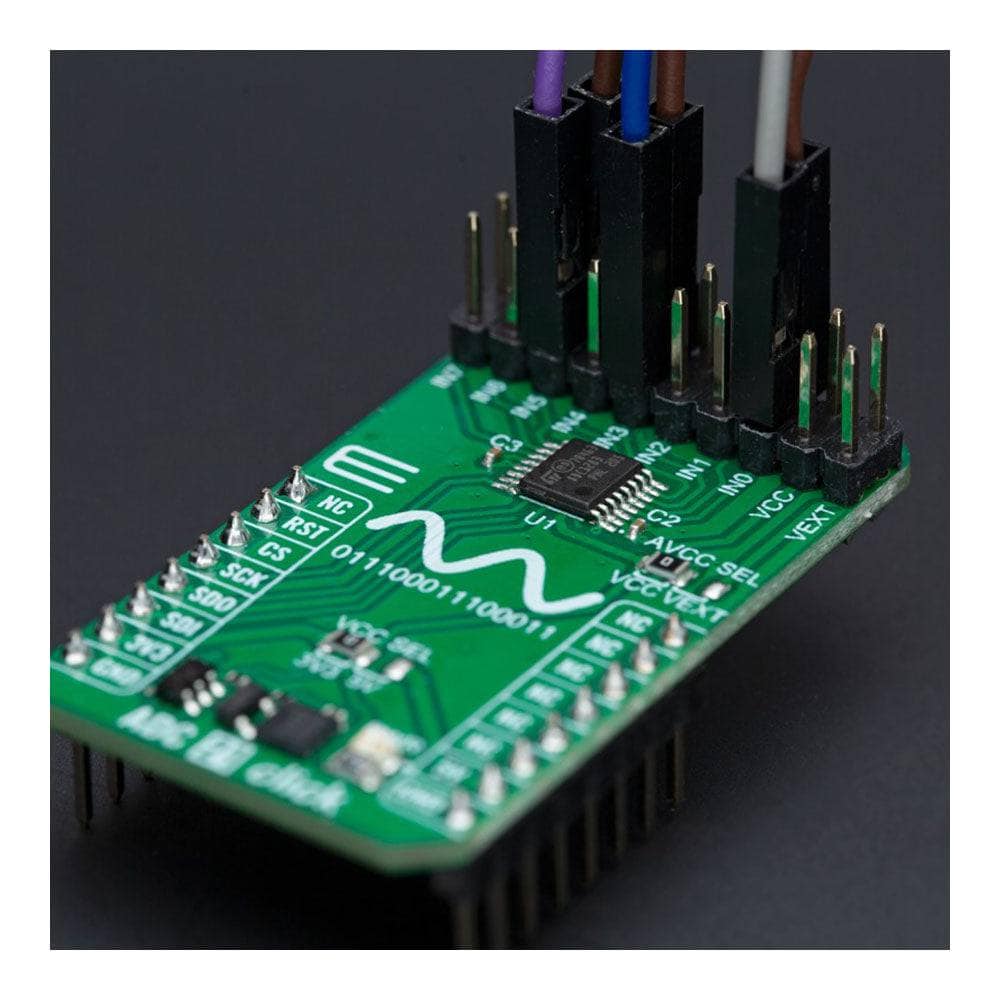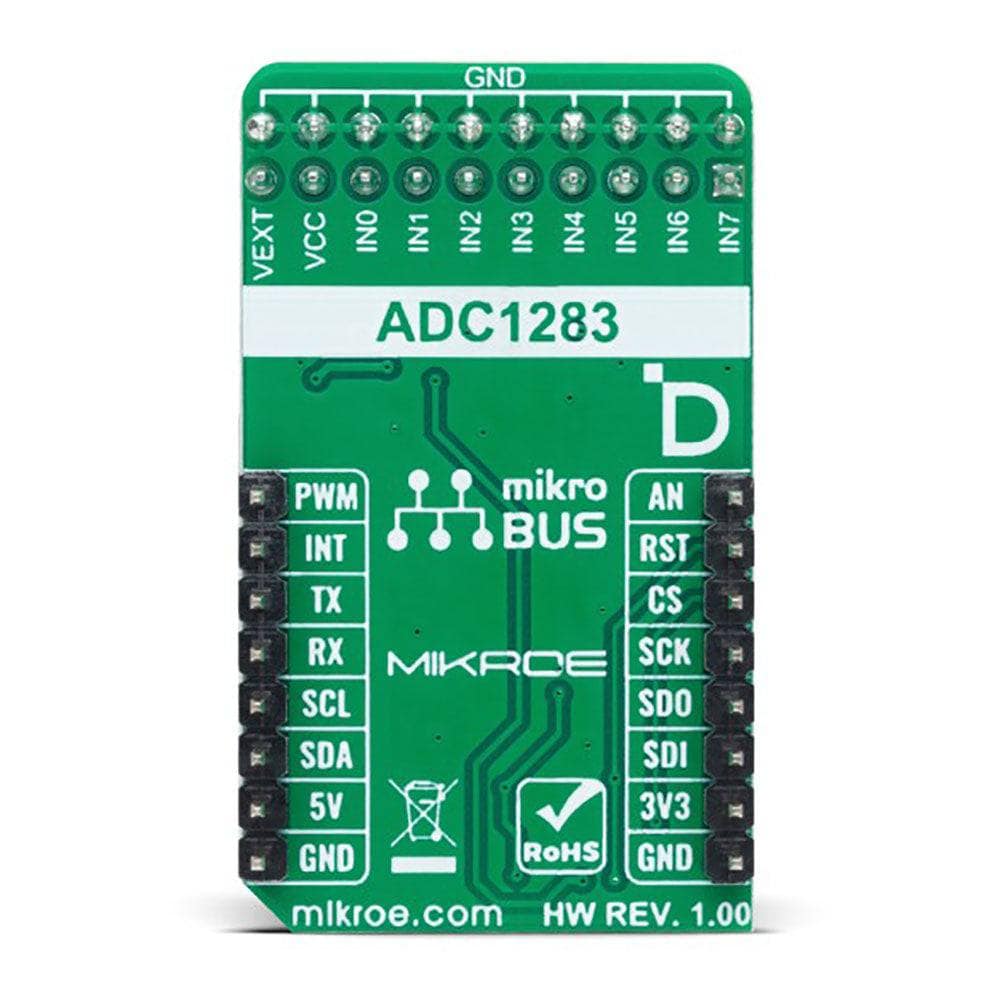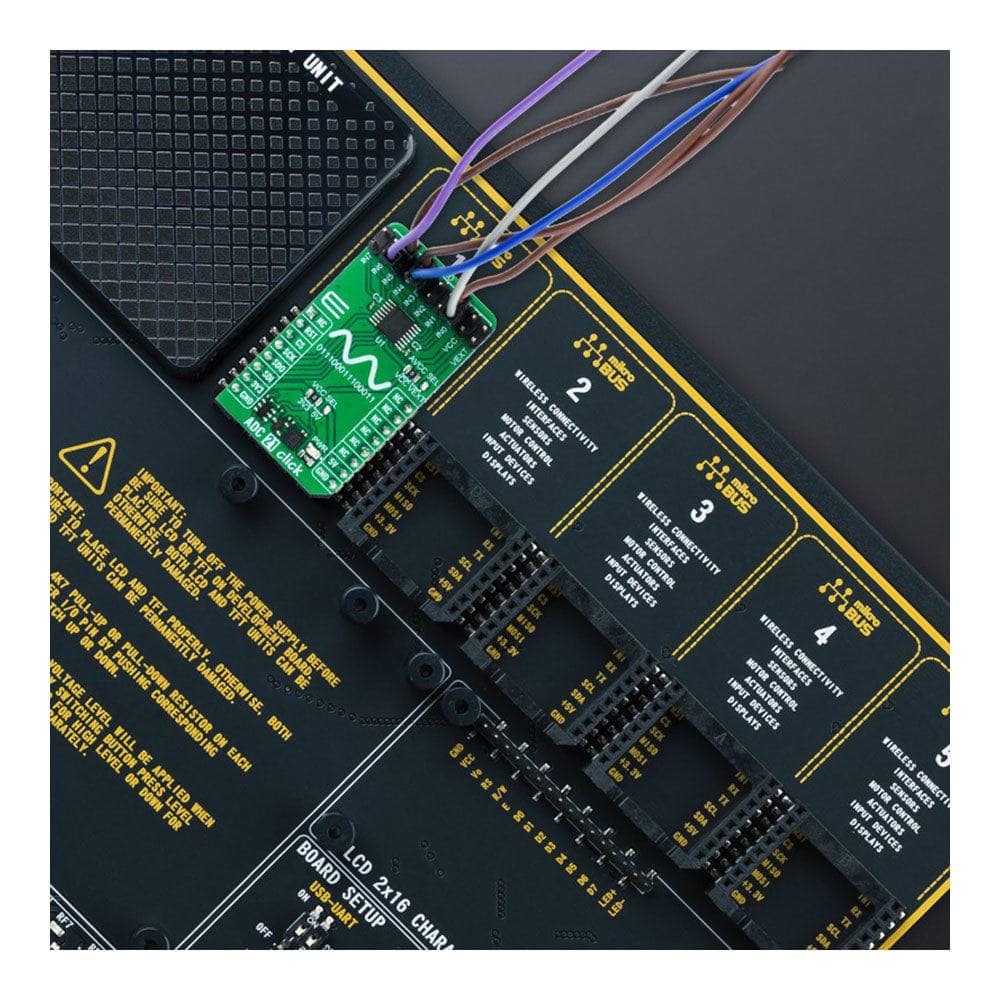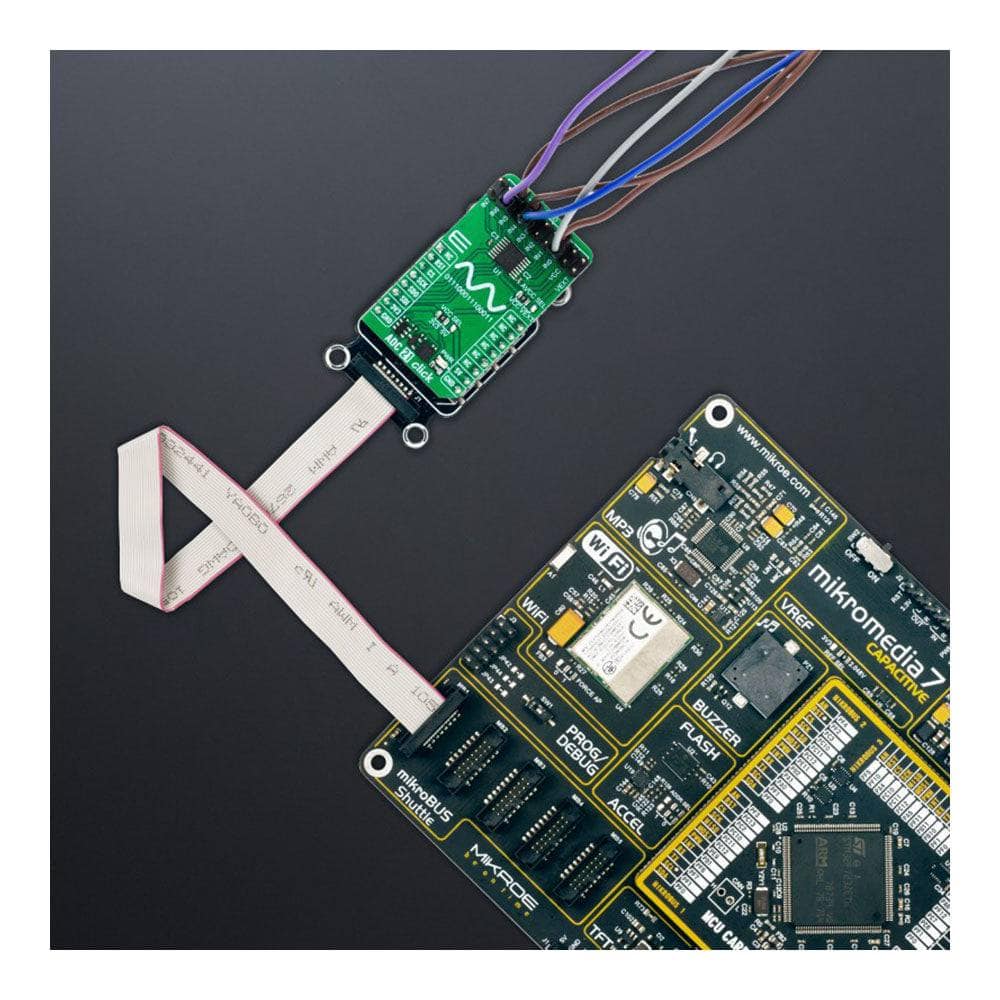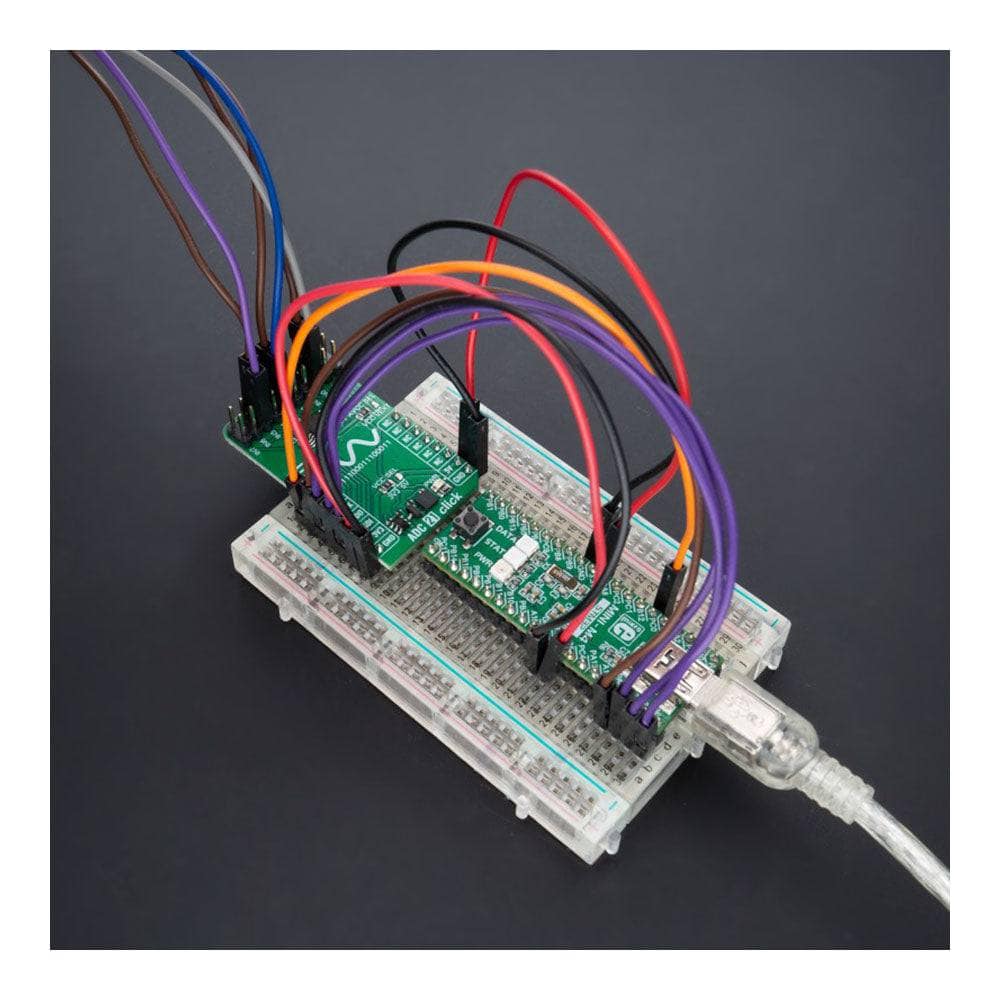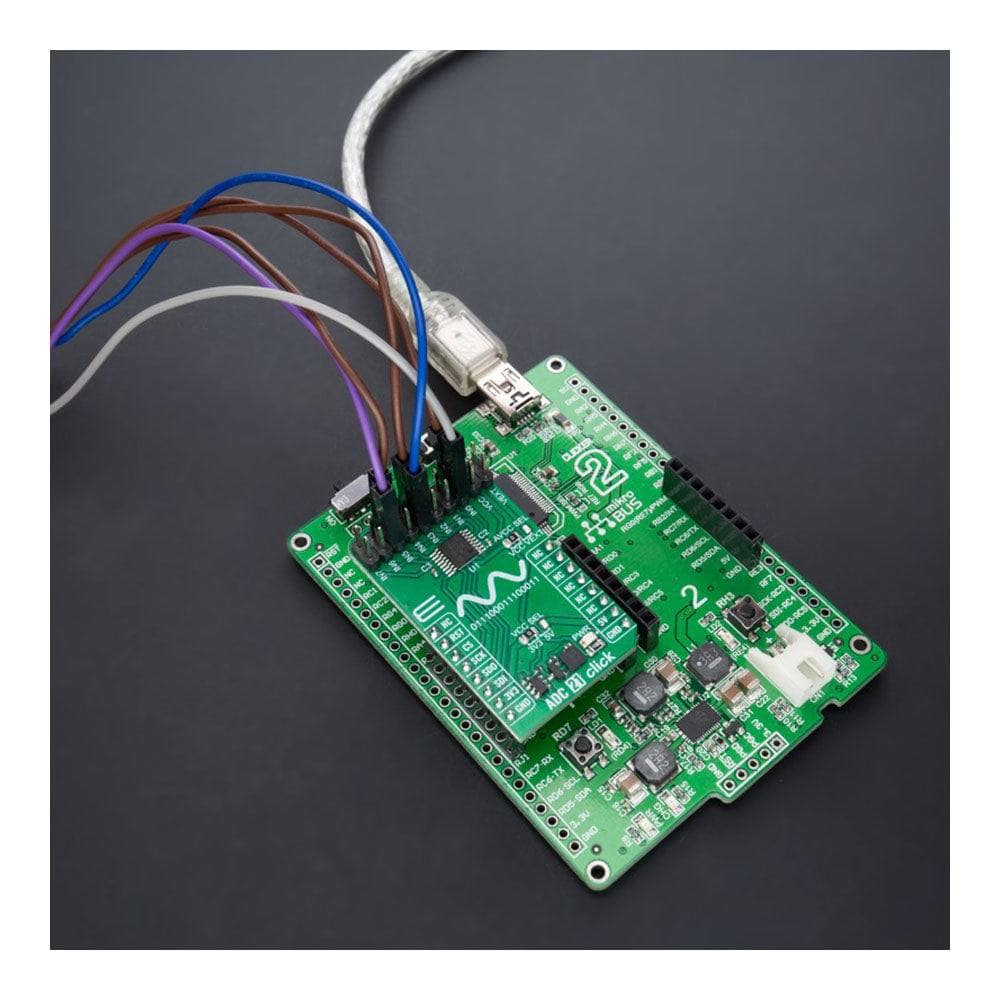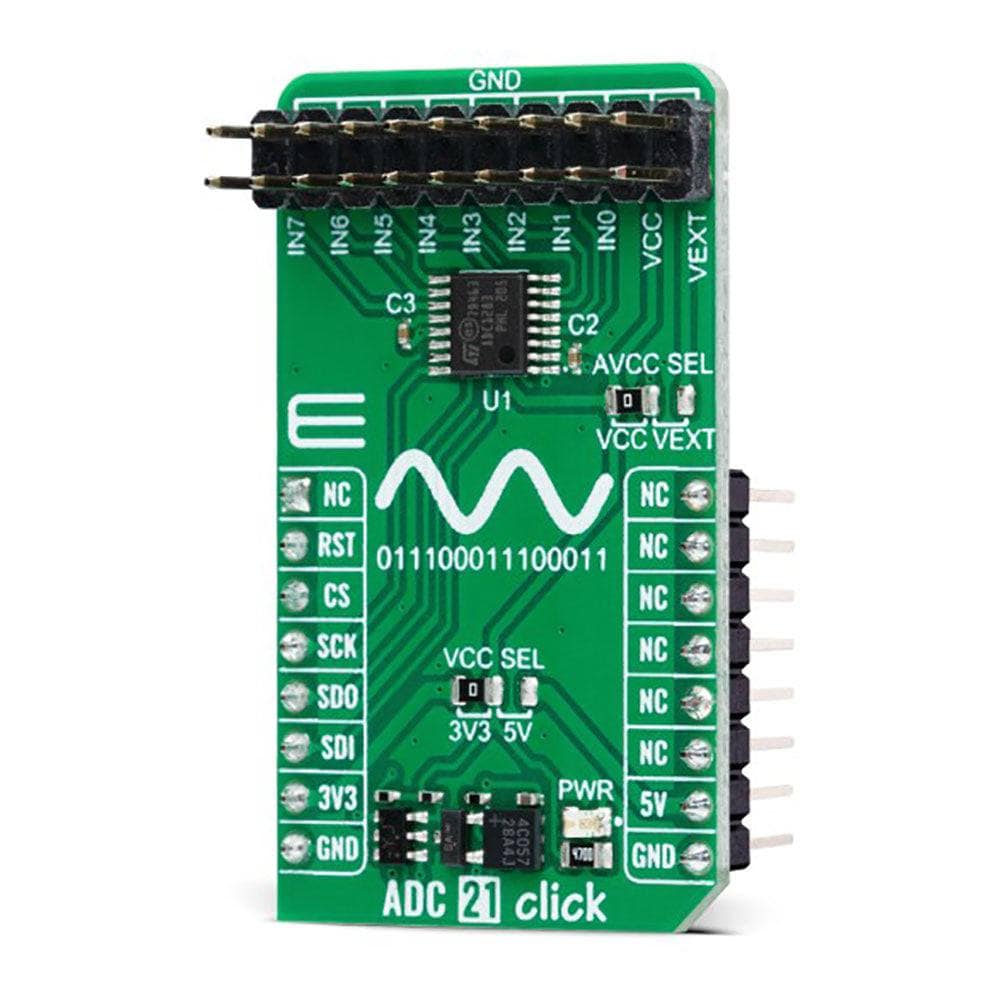
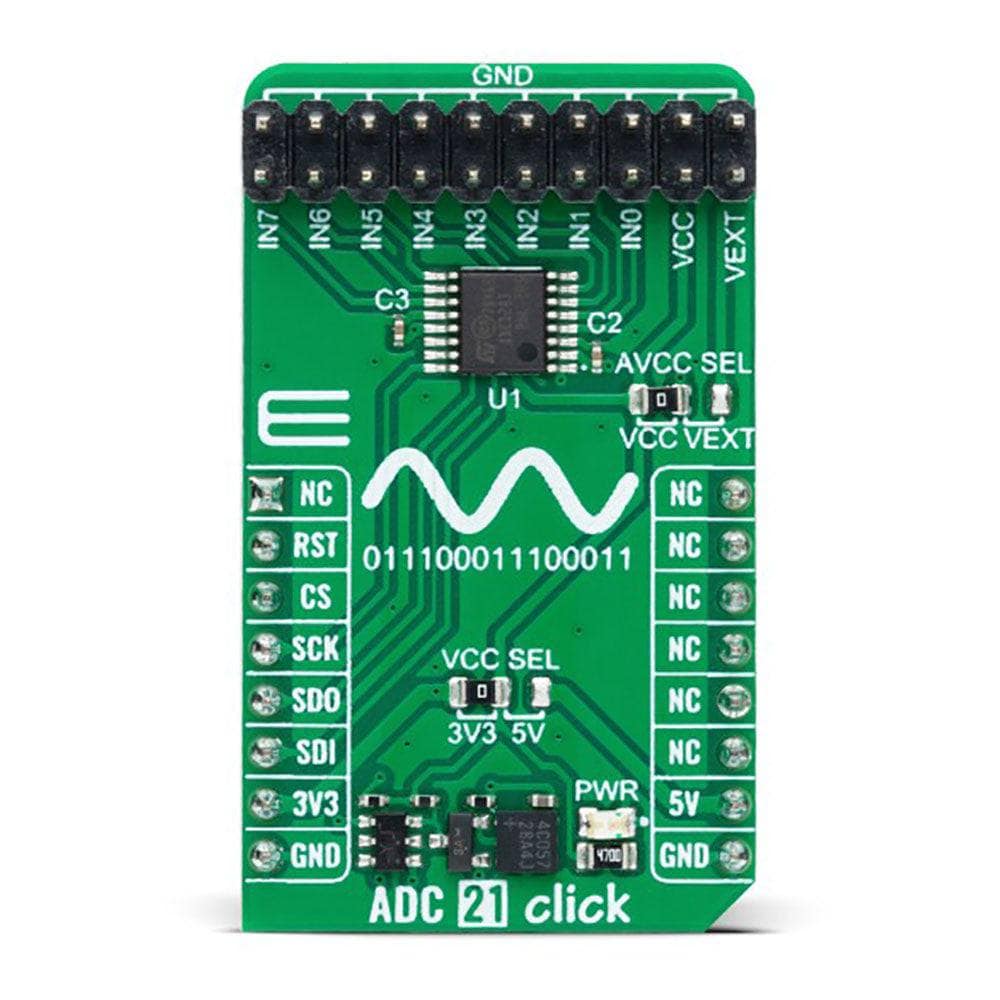
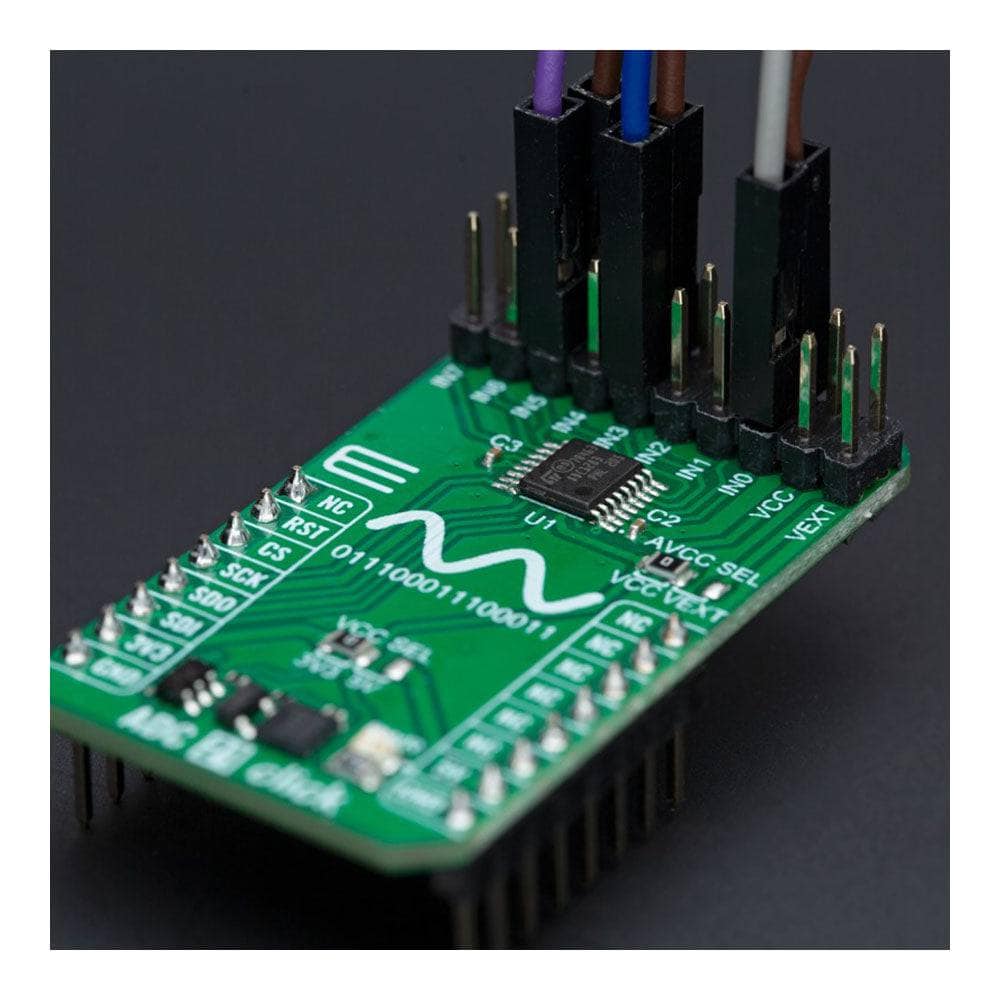
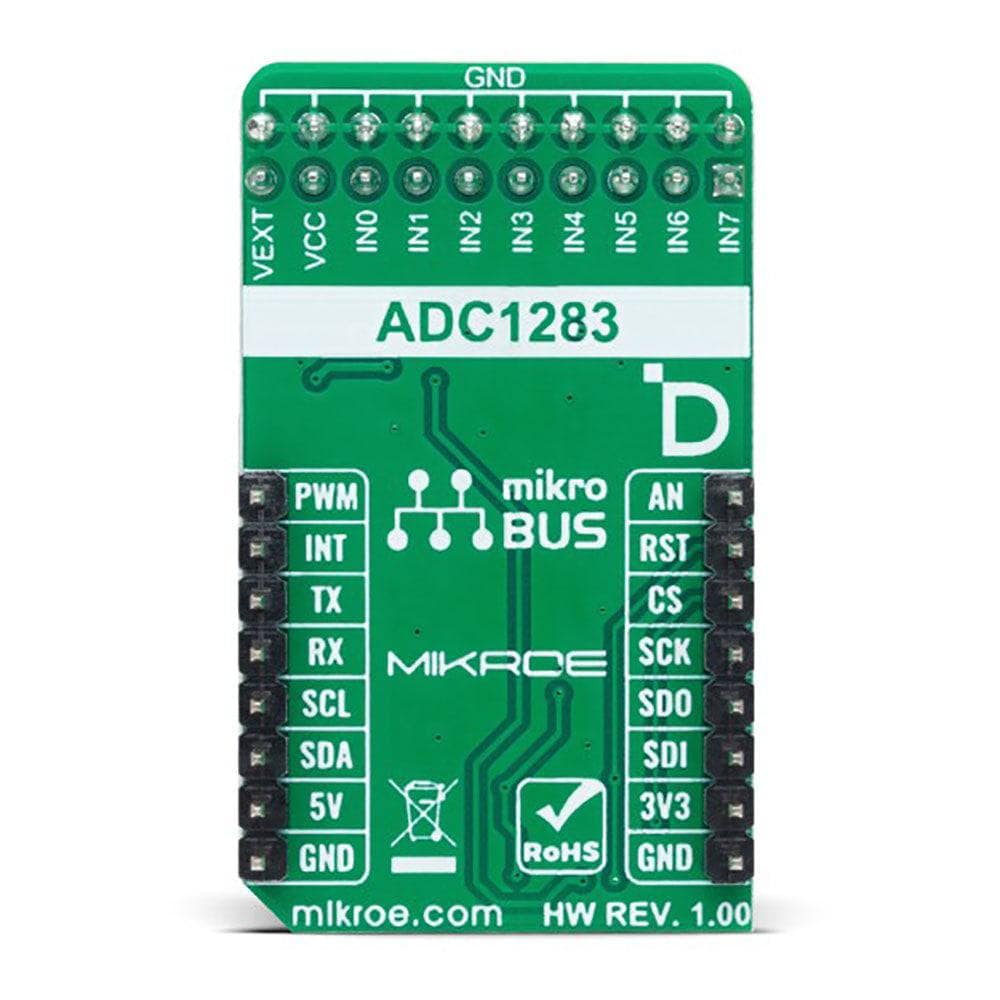
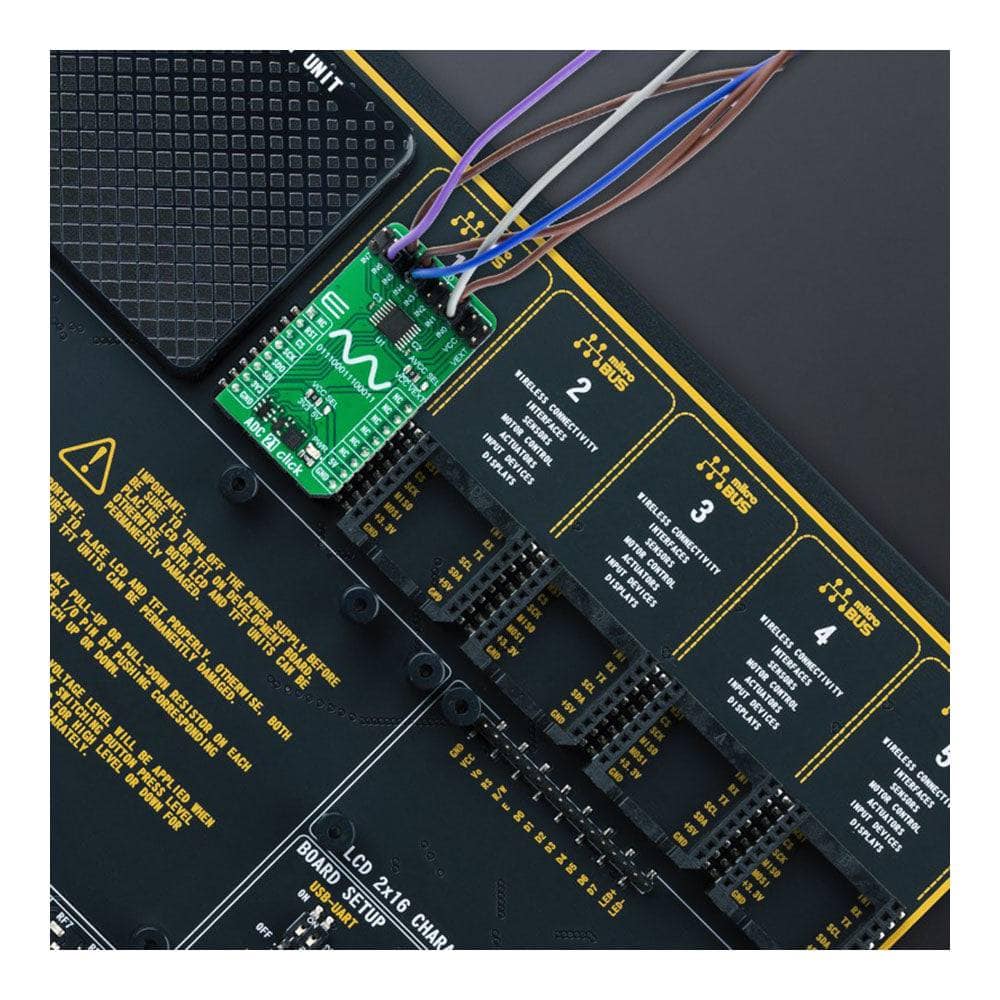
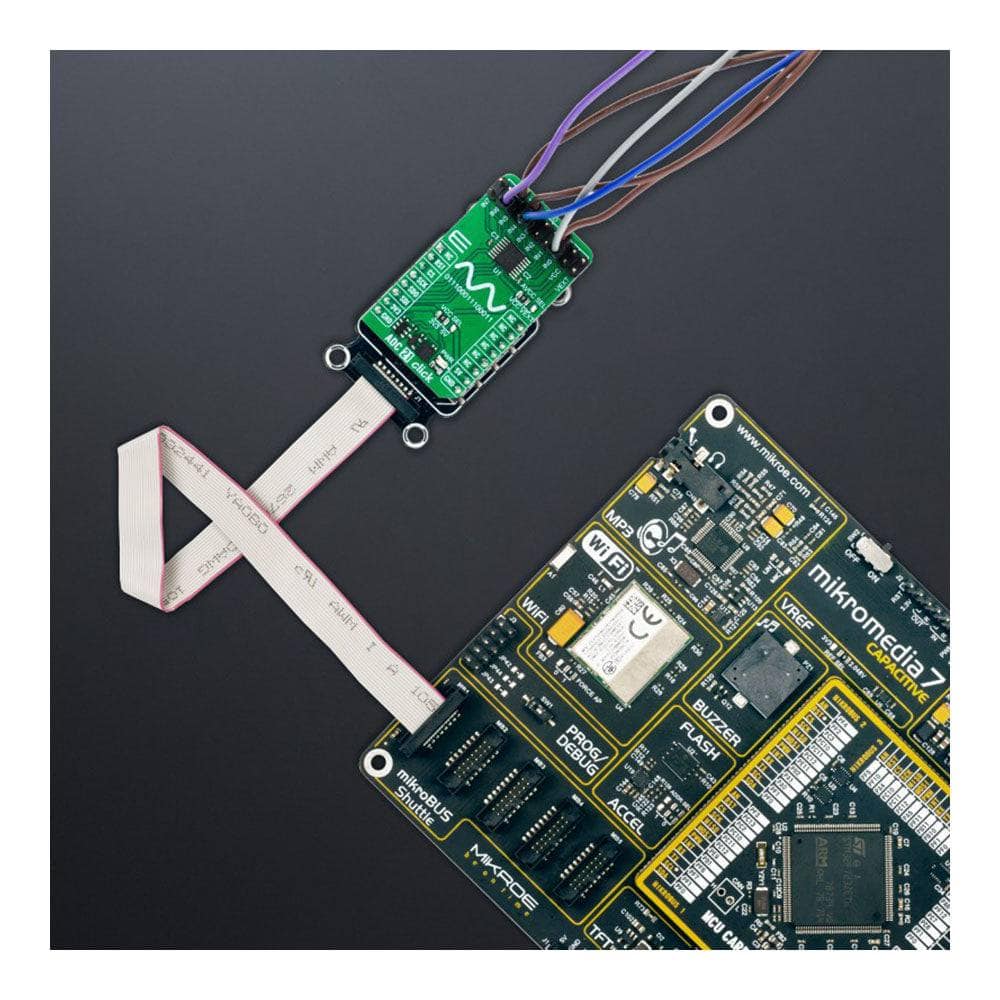
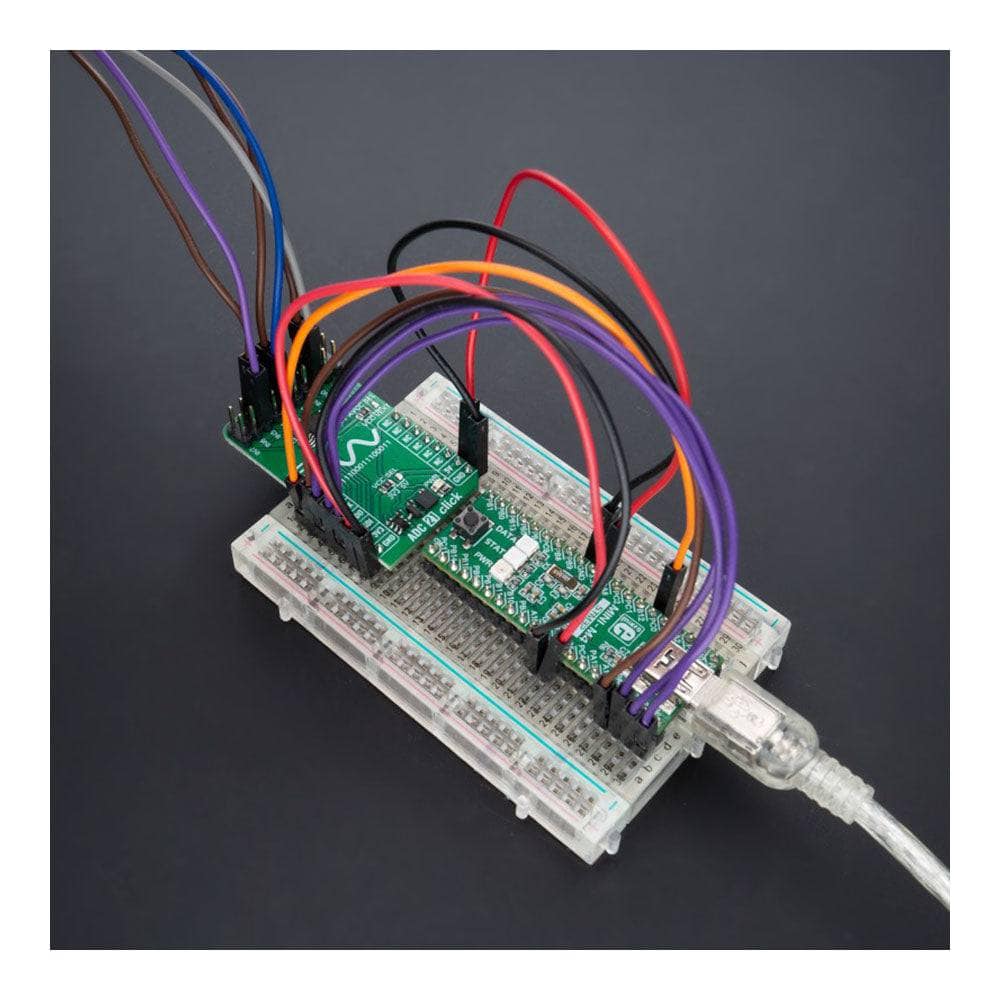
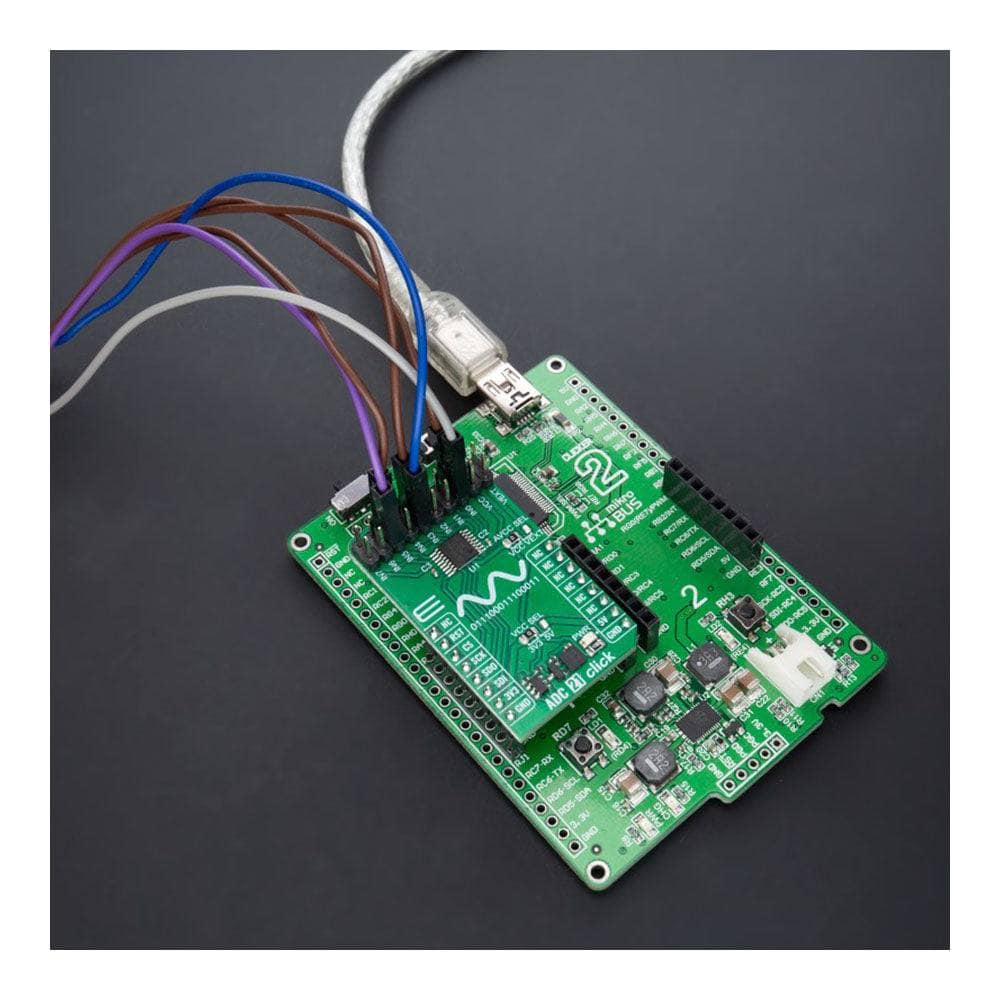
Key Features
Overview
Introducing the ADC 21 Click Board™
Upgrade your analogue to digital conversion with the ADC 21 Click Board™ - a compact add-on board that delivers high accuracy and reliable performance for the most demanding applications. Whether you need remote data acquisition or instrumentation for industrial applications, the ADC 21 Click Board™ is the perfect solution for you.
Low-Power, High-Performance ADC
The ADC 21 Click Board™ features the ADC1283, a pure CMOS, eight-channel, 12-bit analogue-to-digital converter from STMicroelectronics. With a conversion rate of 50ksps to 200ksps, this low-power ADC delivers precise digital representation of analogue voltage. Its architecture is based on a successive approximation register with an internal track-and-hold cell, ensuring accurate and reliable performance.
Multiple Input Options
With eight single-ended multiplexed inputs, the ADC 21 Click Board™ offers versatile input options. The output serial data is straight binary and SPI-compatible, making it easy to integrate with other systems.
mikroSDK-Compliant Library for Easy Software Development
The ADC 21 Click Board™ is supported by a mikroSDK-compliant library, which includes functions that simplify software development. This means you can get up and running quickly without the need for complex programming.
Fully Tested and Ready to Use
At Click Board™, we understand the importance of delivering reliable products. That's why the ADC 21 Click Board™ comes as a fully tested product, ready for use on any system equipped with the mikroBUS™ socket. You can trust that you're getting a high-quality product that will deliver accurate and reliable performance for all your analogue to digital conversion needs.
Downloads
Présentation de l'ADC 21 Click Board™
Améliorez votre conversion analogique-numérique avec l'ADC 21 Click Board™, une carte complémentaire compacte qui offre une précision élevée et des performances fiables pour les applications les plus exigeantes. Que vous ayez besoin d'une acquisition de données à distance ou d'une instrumentation pour des applications industrielles, l'ADC 21 Click Board™ est la solution parfaite pour vous.
CAN à faible consommation et hautes performances
La carte ADC 21 Click Board™ est équipée de l'ADC1283, un convertisseur analogique-numérique 12 bits à huit canaux et à CMOS pur de STMicroelectronics. Avec un taux de conversion de 50 kéch/s à 200 kéch/s, ce convertisseur analogique-numérique à faible consommation fournit une représentation numérique précise de la tension analogique. Son architecture est basée sur un registre d'approximations successives avec une cellule de suivi et de maintien interne, garantissant des performances précises et fiables.
Options de saisie multiples
Avec huit entrées multiplexées asymétriques, l'ADC 21 Click Board™ offre des options d'entrée polyvalentes. Les données série de sortie sont binaires directes et compatibles SPI, ce qui facilite l'intégration avec d'autres systèmes.
Bibliothèque compatible avec mikroSDK pour un développement logiciel facile
L'ADC 21 Click Board™ est pris en charge par une bibliothèque compatible mikroSDK, qui comprend des fonctions qui simplifient le développement logiciel. Cela signifie que vous pouvez être opérationnel rapidement sans avoir besoin de programmation complexe.
Entièrement testé et prêt à l'emploi
Chez Click Board™, nous comprenons l'importance de fournir des produits fiables. C'est pourquoi l'ADC 21 Click Board™ est un produit entièrement testé, prêt à être utilisé sur tout système équipé de la prise mikroBUS™. Vous pouvez être sûr d'obtenir un produit de haute qualité qui offrira des performances précises et fiables pour tous vos besoins de conversion analogique-numérique.
| General Information | |
|---|---|
Part Number (SKU) |
MIKROE-5531
|
Manufacturer |
|
| Physical and Mechanical | |
Weight |
0.02 kg
|
| Other | |
Country of Origin |
|
HS Code Customs Tariff code
|
|
EAN |
8606027384561
|
Warranty |
|
Frequently Asked Questions
Have a Question?
-
Is the ADC 21 Click Board™ a fully tested product?
Yes, the ADC 21 Click Board™ comes as a fully tested product, ready for use on a system equipped with a mikroBUS™ socket.
-
What is the mikroBUS™ socket, and is the ADC 21 Click Board™ compatible with it?
The mikroBUS™ socket is a standardised interface used by MikroElektronika for their Click boards™, providing easy integration with development boards and other hardware. The ADC 21 Click Board™ is designed to work with a system equipped with a mikroBUS™ socket, ensuring seamless compatibility.
-
What is the mikroSDK and how does it support the ADC 21 Click Board™?
The mikroSDK is a software development kit that provides a set of libraries, drivers, and examples for MikroElektronika hardware products. The ADC 21 Click Board™ is supported by a mikroSDK-compliant library, which includes functions that simplify software development, making it easier to integrate the board into your projects.
-
What types of applications is the ADC 21 Click Board™ suitable for?
The ADC 21 Click Board™ is suitable for a wide range of applications, including general-purpose remote data acquisition, instrumentation, and various industrial applications.
-
What are the key features of the ADC 21 Click Board™?
The ADC 21 Click Board™ offers: Eight single-ended multiplexed inputs Output serial data that is straight binary and SPI-compatible High accuracy for demanding applications Compatibility with mikroSDK-compliant libraries for simplified software development
-
What is the ADC 21 Click Board™?
The ADC 21 Click Board™ is a compact add-on board designed to convert an analogue voltage into a digital representation. It features the ADC1283, a low-power, eight-channel, pure CMOS 12-bit analogue-to-digital converter from STMicroelectronics.

